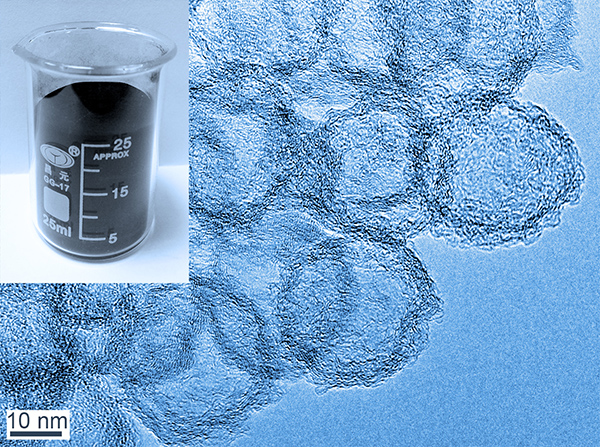Synthesis of Hollow Carbon Nanospheres from a Reverse Micelle System for Energy Storage - 后台 - 高 传博
Hongyu's paper has been accepted for publication by Nano Research (IF: 7.354). Congratulations!
Title: Scalable synthesis of sub-100 nm hollow carbon nanospheres for energy storage applications
Authors: Hongyu Zhao, Fan Zhang, Shumeng Zhang, Shengnan He, Fei Shen, Xiaogang Han*, Yadong Yin, and Chuanbo Gao*
Link to the Publisher: https://link.springer.com/article/10.1007/s12274-017-1800-3

Abstract: Sub-100 nm hollow carbon nanospheres of a thin thickness are highly desirable anode materials for energy storage applications, which, however, remain a great challenge to synthesize by a conventional strategy. In this work, we demonstrate that hollow carbon nanospheres of unprecedentedly small sizes down to ~ 32.5 nm and thickness of ~ 3.9 nm can be produced on a large scale by a templating process in a unique reverse micelle system. Reverse micelles enable a spatially confined Stöber process that affords uniform silica nanospheres with significantly reduced sizes compared with that from a conventional Stöber process, and a subsequent well-controlled sol-gel coating process of a resorcinol-formaldehyde resin on these silica nanospheres as a precursor of the hollow carbon nanospheres. Due to the short diffusion length arising from the hollow structure, as well as the small size and microporosity, these hollow carbon nanospheres show excellent capacity and cycling stability when used as an anode material for lithium/sodium-ion batteries.
中文简介:尺寸小于100纳米的空心碳球的大批量合成及其在储能中的应用
电极材料的纳米化可以提升电池的有效容量和充放电倍率性能。空心碳球由于具有独特的结构,将其纳米化在先进电化学储能中将会有很重要的应用。传统的化学合成方法对于制备尺寸小于100纳米的空心碳球是非常困难的。为了解决这一问题,本工作采用反相胶束作为微反应器,通过模板作用实现了尺寸小至32.5纳米、壁厚约4纳米的空心碳球的大批量合成(实验室产量约为5克)。反相胶束的引入使得二氧化硅的Stöber合成体系被限制在一个极小的空间内,因而实现了小尺寸二氧化硅纳米球的可控制备,成为合成空心碳球的良好的模板;在经过原位间苯二酚-甲醛树脂的溶胶凝胶包覆、高温碳化和二氧化硅模板的去除等过程后,便得到了高质量的空心碳球。由于具有较小的尺寸、较短的离子扩散路径和微孔性质,该类空心碳球在锂离子和钠离子电池应用中表现出优异的性能。
-
2024
03-29
-
2024
03-09
-
2023
09-04
-
2023
08-29
-
2023
07-26
-
2023
07-24

 (创新港)
(创新港)


